We talk to coach Trevor Painter and physio Alison Rose about how Keely Hodgkinson has been able to leap from world championship worry to 800m gold medal favourite
It says much about how difficult the past year has been for Keely Hodgkinson that her feeling “like she’d been run over by a bus” was seen as being a positive thing. “She felt dreadful for a couple of days,” says the Olympic 800m champion’s coach, Trevor Painter. “But then she trained again and, even though she wasn’t feeling great, the numbers were really good, so we knew her body was okay.”
There was good reason for this particular pain and suffering – it meant she was racing again. Painter is describing the immediate aftermath of Hodgkinson’s first outing in over a year – 376 days to be precise – at the Silesia Diamond League in Poland on August 16. Having had to absorb and recover from three hamstring injury blows that combined to keep her on the sidelines since her golden night in Paris last summer, the 23-year-old opted against a low-key return.
Back on the start line, there was no easing herself back in gently. Hodgkinson promptly blew the cobwebs, and the opposition, away with the second-fastest time of her career – a world-leading 1:54.74 that only fell fractionally short of her British record (1:54.61).
As a statement of intent, it could barely have been any stronger. Immediately, the narrative around Hodgkinson flipped from whether or not she would even reach this month’s world championships to her becoming the cast iron favourite for gold.
This, says Painter, is what can happen when she is presented with a challenge.
“I was a bit more nervous than normal [ahead of Silesia] but I knew she was fine,” he says. “She'd passed all the tests with the physios and the things that we have to make sure that everything was good. I was slightly apprehensive, but that was more about ‘how big can this be?’, rather than ‘is she going to get round?’. I was very confident she would run 1:55 and I was confident she could run 1:54, so I'm just glad it came out.”
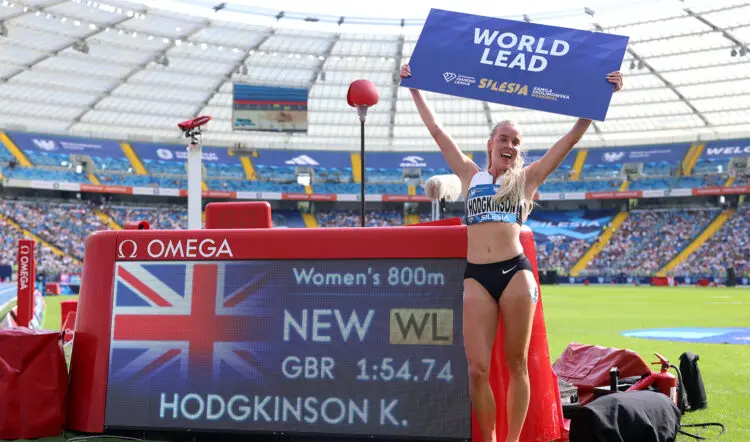
In fact, most of the trepidation came after the race, and the questions about how Hodgkinson’s body might react to being put under such stress again.
“It's been a neural problem that's caused the issues and the neural system [or nervous system] is what gets stressed the most in a performance like that,” says Painter. “If she had gone out and run 1:57 we wouldn’t have learned anything but she smashed a 1:54 and so it was like: ‘Well, that is a serious test. What has happened to your body now?’ and she presented well.”
So well, in fact, that just a few days later she won the Lausanne Diamond League in the second-fastest time of the year, 1:55.69, despite the pouring rain in Switzerland. With fitness restored, Painter expects her to be ready to go much quicker – albeit possibly not in the championship environment of Tokyo.
“I thought we should be able to get her into 1:54 shape for Tokyo,” he says. “But whether that comes out without pacemakers… we knew she was in 1:53 shape in Paris but you need to be in that shape to run 1:56 the way she did [in the Olympic final] – she was just dominant and composed. I think she probably will be in 1:53 shape in Tokyo now, but it probably won't happen because she's going to have to front run it, and you ain't running 1:53 on your own without a little help!”
That Painter is speaking so freely in such positive terms – Jarmila Kratochvilova’s long-standing women’s 800m record is 1:53.28, after all – is making for a very pleasant change indeed, given the struggles of the past 12 months. Hodgkinson is no stranger to setbacks but has this period been the most difficult for her to recover from?
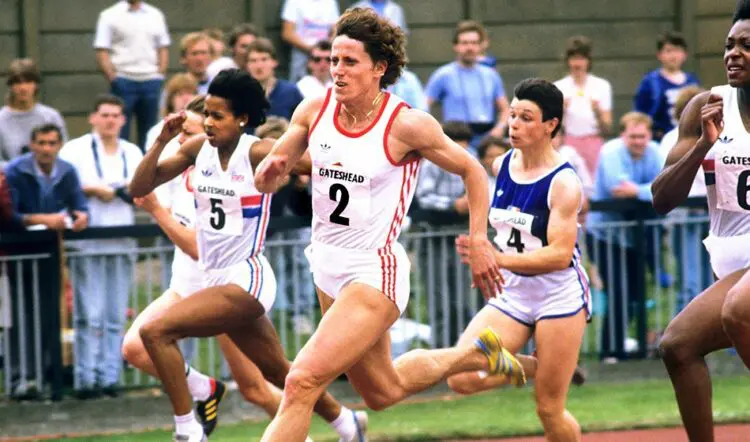
“Yes, because it's been three blows, really,” he says. “She had a niggle leading into Paris and then she went on holiday with her family to celebrate. When she came back, it had grown from a niggle to being a bit more serious, so we had it scanned and shut things down. Then we built her back up from that.
“You have a period of no running at all and then you phase in some cycling and some swimming, then you start some jogging and then you run a bit faster, and a bit faster and after about six weeks you're back to your normal training.
“We had tears in January on the track, because she wasn't where she wanted to be. But then, very quickly, she accelerated through the gears and, come the middle of February, she was ready to break the [indoor] world record [at her own event, the Keely Klassic] – that’s how quickly it changes.
“But then we had the second problem, which was a big blow, because we knew what shape she was in and what she could have done. It would have been a huge story but, sadly, it never happened.
“You're mourning that loss, and you start the process again and build up through the gears. Then we were two to three weeks before Stockholm [Diamond League in mid June] and we were ready. Everything was going in the right direction and then boom! It happened again. Thankfully that one wasn't as bad so we were able to build through the gears a lot quicker.
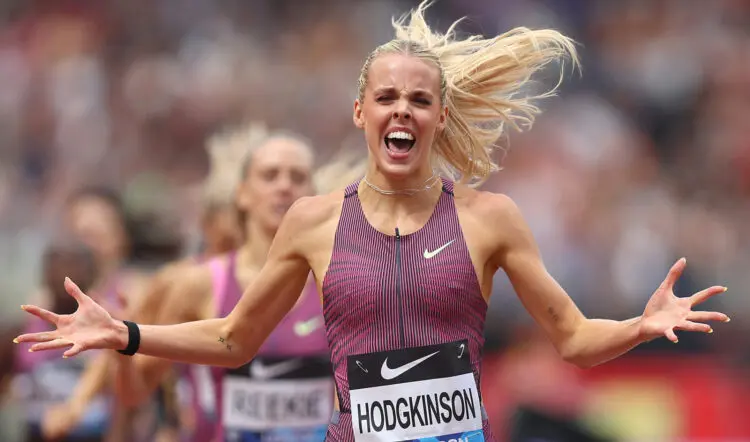
“Nike did a shoot in Portugal where we had a camp recently to get Keely into top shape and in that there’s footage where she's doing some 600s with [European indoor 3000m champion] Sarah Healy and Sarah's miles ahead of her.
“But every session stimulates her and she develops from it and, all of a sudden, the week before Silesia we knew she was back to being Keely Hodgkinson and that she was going to do something really big. So then it's a case of: ‘Right, how do we fix you in between that performance to go again?’"
A key part of that process has been the team of physiotherapists behind the scenes. Former international marathon runner Alison Rose, who also treated Olympic champions Kelly Holmes and Jess Ennis-Hill, is one of their number and has been impressed by Hodgkinson’s approach.
“She's been really patient,” says Rose. “She's followed the plan. She hasn't pushed it. She has obviously been really frustrated with it, but she hasn’t done anything silly that would have counteracted [the work we’ve been doing].
“An impatient athlete would be the kind of person that goes against what you've said and hurts themselves. She’s been desperate to get back, but has been very patient and smart. Even in Lausanne, I think she was smart not to try to showboat in that race. The eyes are on the goal, as opposed to just trying to grab everything in the short term.”
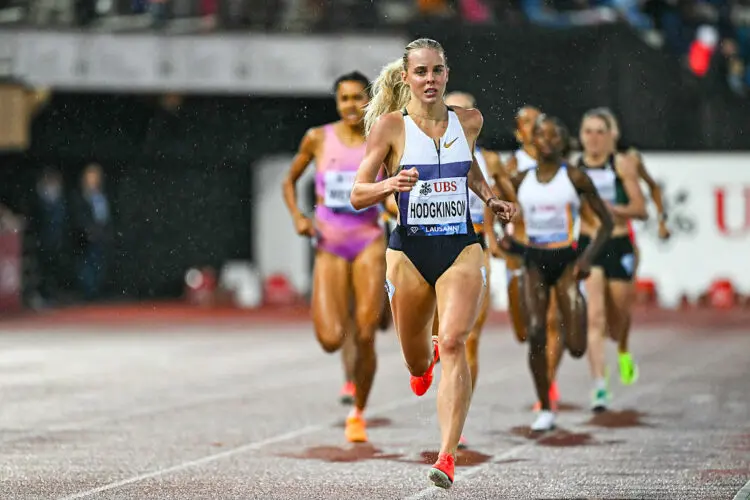
Hodgkinson’s natural power is not only what makes her extraordinary on the track but it’s also what places her system under so much pressure, making that maintenance between training sessions and races so important. Rose adds, though, that another key element is communication and that the European champion is not only incredibly in tune with her body, but also increasingly good at spotting potential issues.
“If I assess her and she'll say: ‘I think I'm just not quite straight at the moment or quite aligned,’ she's always right,” says Rose. “I think she's also really pleased that ‘I was right’. I think it's really important for any athlete to be able to identify that. Someone like Keely not being quite right could be an injury risk. It’s all a learning curve.”
And Hodgkinson has learned a lot. As Painter points out, she has been getting knocked down, but getting up again, for a long time now.
“Resilience and composure have always been big strengths of hers,” he adds. “That's why she's won so many medals. She has been through a lot, but you only get resilience by going through hard times and she's had a lot of them growing up as a kid, with the operation on her ear (Hodgkinson is 95 per cent deaf in one ear after undergoing an operation to remove a tumour when she was 13) and things like that. It's made her who she is.
“This year it’s been exactly the same. She's had to draw on strengths to get through. There have been a lot of tears and a lot of fluctuations in mood because one minute you’re super happy and the next you’re really upset. It's a shame, but it makes you stronger.”
It’s a very different Keely Hodgkinson that will arrive at Tokyo’s National Stadium in 2025, compared to the 19-year-old who had just arrived on the senior scene but left the 2021 Olympics gobsmacked by her then British record and a silver medal.
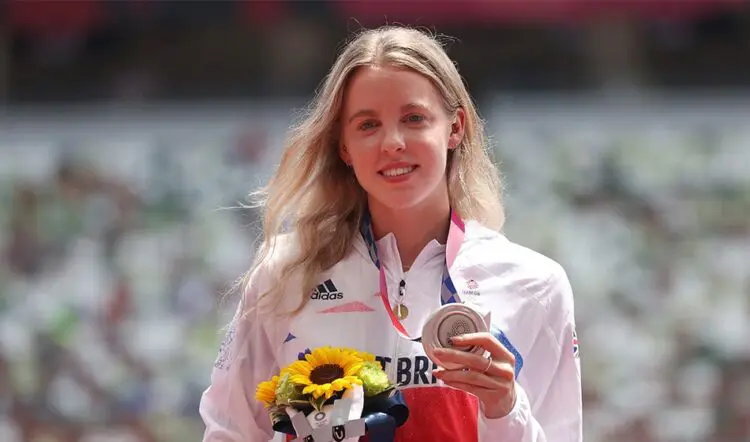
Aside from Commonwealth Games gold, a world title is the only thing missing from an already burgeoning CV. But the world championships, either indoors or out, have not been kind thus far. Having to settle for silver in Eugene in 2022 and Budapest a year later hurt. Do those narrow misses represent the biggest disappointments of her career?
“I’d say so, yes,” says Painter. “The worlds has never gone perfectly. She's had two silvers and then indoors she's never been able to compete. She's always had an injury when it's been the world indoor championships and it's so frustrating because she should have had three gold medals now in the world indoors, but she's not been able to perform.
“Hopefully she can win this one now and then, hopefully, win the world indoors [in Poland next spring] as well. She needs something to motivate her and the bigger the challenge, the more she rises. Most of the good people in all sports are like that. She wants to leave this sport with a legacy and be one of the greatest of all time.”
Hodgkinson is the biggest name in the Manchester-based M11 Track Club that is led by Painter and his wife, Jenny Meadows, but it must have been even more difficult for her to look on this summer and watch team-mate Georgia Hunter Bell making such impressive 800m progress, winning Diamond League races in Stockholm and London.
However, Painter insists that change in dynamic brought its benefits.
“They all support each other,” he says of the group. “It's very close-knit and Keely has been everyone's greatest supporter this year, which has been frustrating for her but it also gives her some belief. She's seen Georgia in training, and she knows that Georgia is the benchmark, because Georgia is winning Diamond Leagues over 800m so Keely thinks: ‘That's my target’ and it's great to know that your target is in your training group, and you can gauge off her.
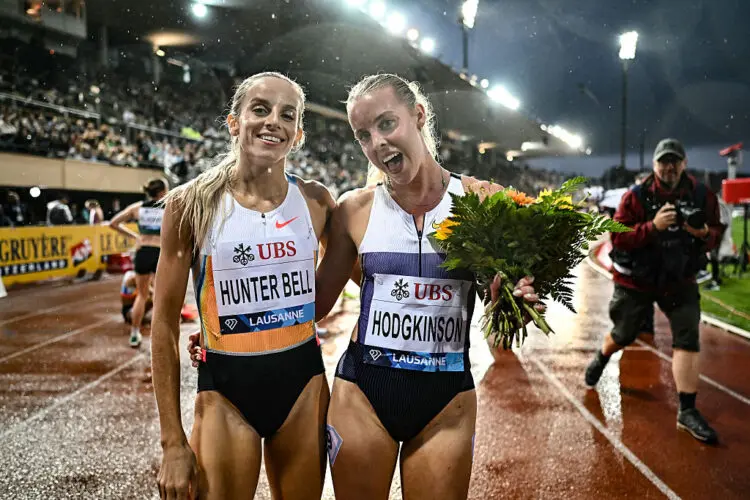
"They did a session just before the London Diamond League and Georgia was way ahead so Keely was like: ‘Okay, that's where I've got to be’. It's key to that stimulus. She needs that challenge. It has been frustrating but it's also been rewarding in a sense.”
It has also been rewarding to silence the online critics recently. One observer called it “delusional” for Hodgkinson to ask for the wavelight pacing technology to be set to 1:54 for that comeback race in Silesia, for example, while Painter is also aware of some other less than positive theories circling the internet.
“We're not just winging it,” he says. “Obviously these people are making these comments because they don't know where we are and they've not seen us in training. But everyone's entitled to their opinion, aren't they? It does wind you up a bit, and there's one guy on the internet saying that Keely's had a silent ban for a year – [suggesting] that that's why she hasn’t performed. And it's like: ‘You're insane’.
“All the plans are in place but there are just some strange people with strange opinions in the world. You've just got to rise above it and use it as a bit of fuel, but ultimately, not get too stressed about it.”
The focus is on that Tokyo gold and, for Hodgkinson to finish the year as world champion would represent a remarkable achievement for the 2024 BBC Sports Personality of the Year. Those tasked with getting her to the top of the global mountain once again, though, aren’t taking anything for granted.
“I think I'll probably heave a sigh of relief once these world championships are all over,” says Rose. “The Olympics were the same. People said to me: ‘Why do you get worried about it?’. Well, until that final is over, it's not over. Anything could happen – you could lose a spike, someone could push you, you just don't know and all of those things are out of your control.
“Keely is in it and dealing with it and it’s probably easier doing that than it is watching it. And you know how much work has gone into it. You know how much work she's put into it, how much work Trevor and Jenny have put in, how much all of us behind the scenes have put into it. She works phenomenally hard.”
She also shares characteristics with her fellow champions, Holmes and Ennis-Hill.
“Focus,” says Rose when asked what she thinks the trio have in common. “There's that real focus on training hard and what your goal is. Then it's having support around them because that’s what makes you grounded, doesn't it? With Kelly, it was family, for Jess, it was her husband and family and with Keely it’s family and friends.
“I also think it is that absolute self belief that you can do it – an absolute ability to train hard, that big focus on the goal, and just knowing you're going to get there.”
